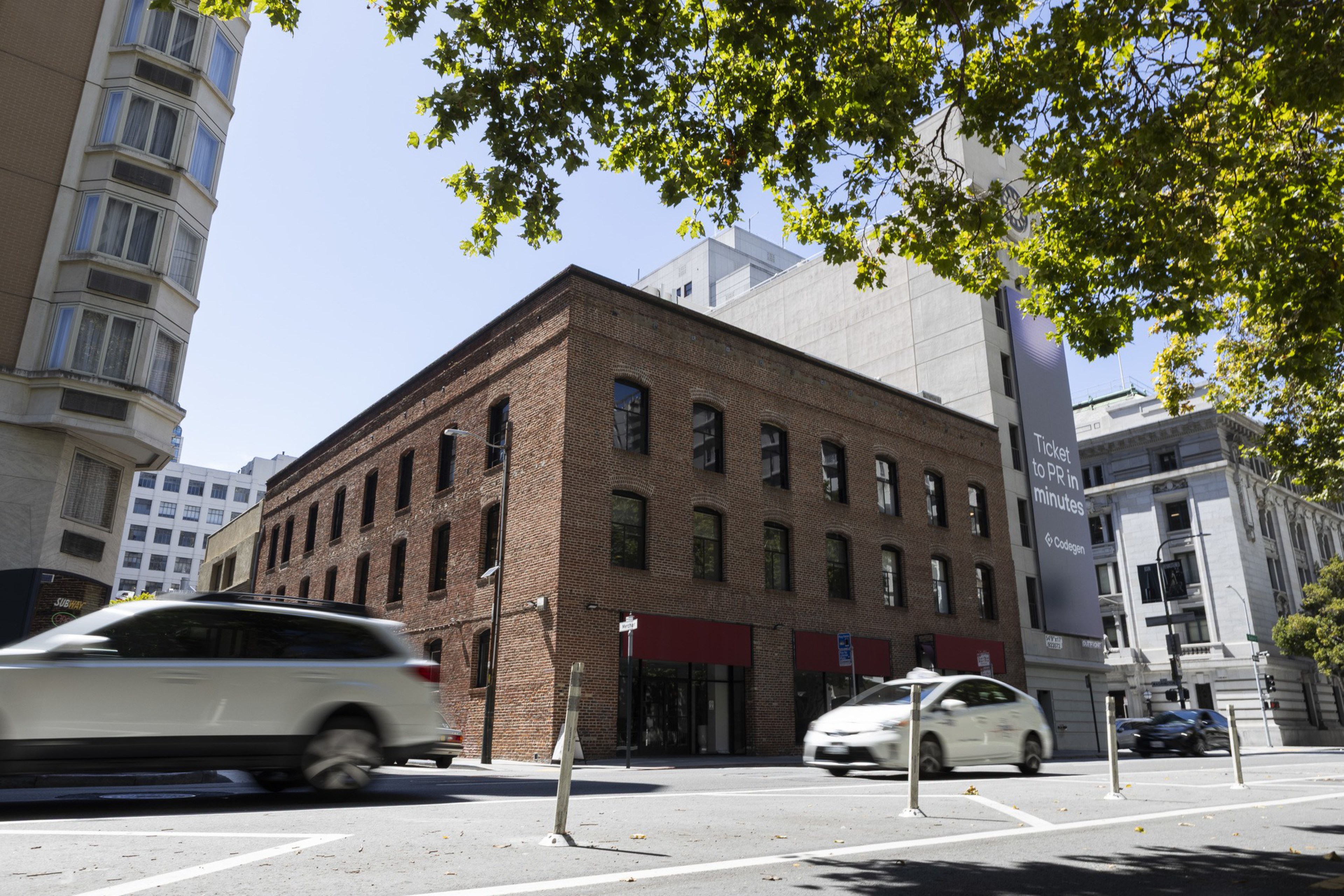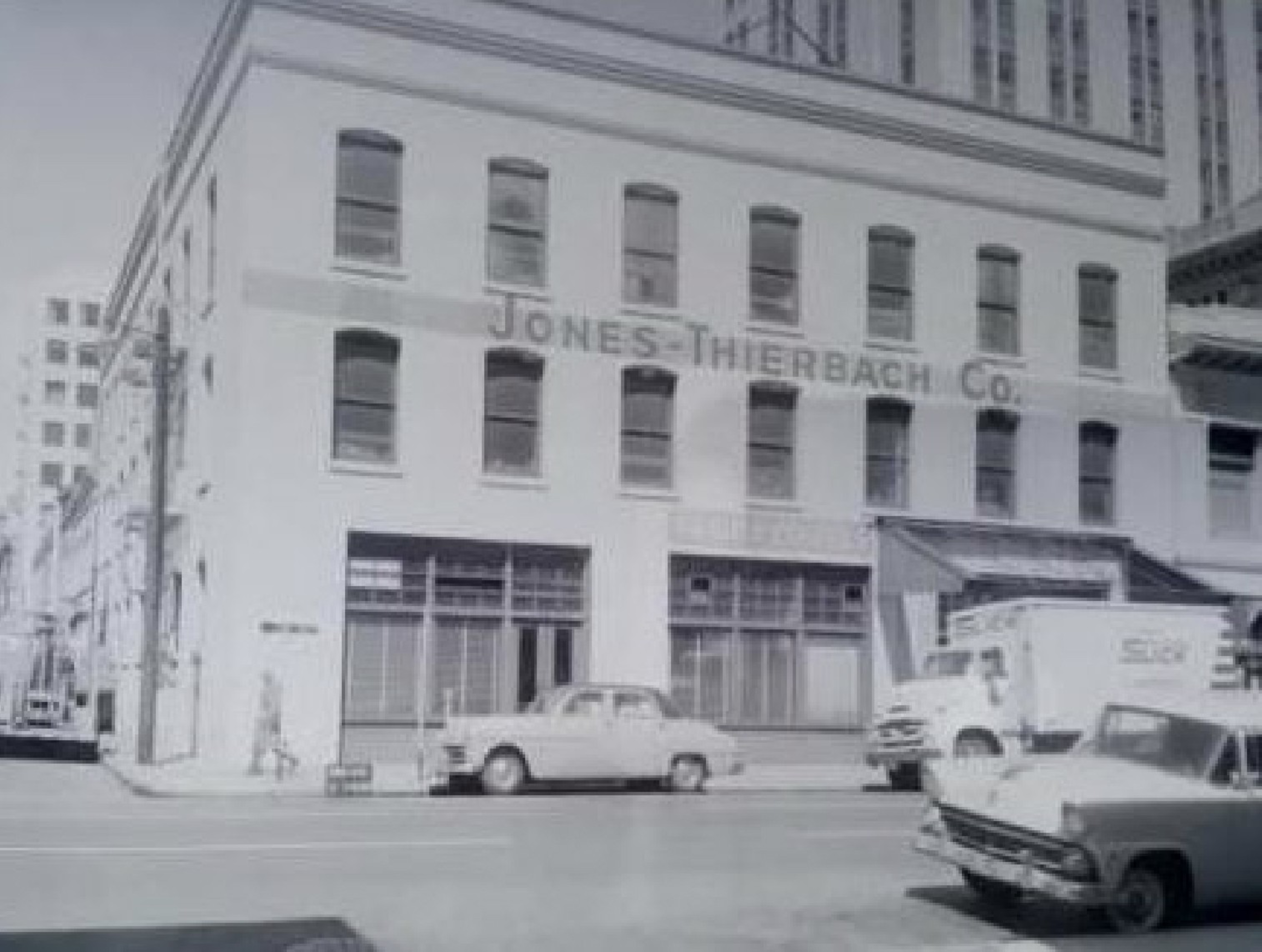With its vaulted ceilings, low lighting, and vintage furniture, Danielle Kuzinich’s downtown wine bar, San Francisco Wine Society, feels like the perfect place to cozy up with a glass of pinot.
The bar is tucked into the back of a three-story red brick building at 447 Battery St., constructed in 1907 and officially designated a historic landmark in 2022. In its early days, the building served as a coffee company during the industry’s San Francisco heyday.
Last year, Kuzinich was shocked to learn that the building is slated for demolition to make way for a fire station and adjacent 41-story high-rise as part of a public-private downtown development project. The wine bar, where Kuzinich worked for roughly a decade before taking over in 2021, now faces eviction.
“I’m completely disappointed,” Kuzinich said in an interview last month at the bar. “This has been 14 years of my life.”
Now, her only hope of staying depends on city leaders coming to recognize the building as a part of San Francisco history worth preserving.
It’s a long-shot dream: Mayor Daniel Lurie, who campaigned on the promise to revitalize the downtown economy, and Supervisor Danny Sauter, whose district includes 447 Battery St., have introduced legislation to revoke the building’s landmark designation to pave the way for the high-rise.

City officials who support the project say it will bring much-needed economic activity downtown. The building, they say, will be reimagined as a “state-of-the-art fire station.”
But the plans have drawn criticism (opens in new tab) from historic preservation advocates who argue that the coffee landmark is a rare gem and that removing its historic status would make it easier to bulldoze other significant buildings.
“It’s setting a horrible precedent,” Kuzinich said. “If any developer wants to come in, they can throw enough money at it and have a historic landmark designation rescinded.”
A relic of San Francisco’s coffee history
Built a year after the 1906 earthquake, 447 Battery St. was once home to the Jones-Thierbach Company, a midsize coffee and tea business founded by German immigrant Charles Thierbach.

For 60 years, the building functioned as a roastery, warehouse, office, packaging center, and production facility — playing a key role in San Francisco’s once-thriving coffee industry.
City documents (opens in new tab) used in the landmarking process cite newspaper ads from the 1910s promoting Jones-Thierbach’s “high-quality products.”
“While it appears that the Jones-Thierbach Co. was not known to pioneer new techniques or products in the early years of the industry, the company maintained a profitable mid-size roastery and manufacturing facility out of which they produced several popular wholesale brands of canned coffee,” the documents state.
Thierbach’s son George took over the company and became a prominent figure in the industry as president of the National Coffee Association and the Pacific Coast Coffee Association, according to a 1952 New York Times obituary (opens in new tab). In 1967, the building was sold, and the company ceased operations. Battery Street Holdings LLC is listed as the current owner.
Woody LaBounty, CEO of San Francisco Heritage, has spoken out against the planned demolition of what he called a rare remnant of the city’s early industrial past.

“San Francisco was a center of this coffee production in the West Coast at the time,” he said. “There aren't many places that speak to that history.”
He noted the striking architecture, with its brick exterior and deep windows that are increasingly rare in San Francisco.
The site was eyed for an 18-story hotel development in 2020 (opens in new tab), but that plan fell through. Aaron Peskin, president of the Board of Supervisors at the time, introduced a resolution (opens in new tab) the following year to initiate the process of designating the building as historic.
"It is a remarkably handsome building," Peskin said. "This building is not only an industrial warehouse survivor but is also inextricably linked to the history of coffee in San Francisco."
The Historic Preservation Commission recommended approval in August 2021, and the full Board of Supervisors voted to designate it a landmark seven months later.
LaBounty warned that if the city moves forward with the plan, it would be the first time San Francisco has intentionally demolished a landmark.
“Once you cross that line, it gets easier and easier to justify doing it again,” he said.
‘Not the most special building’
Sauter, Peskin’s successor, and other city officials who want to see more development downtown consider the building’s site a perfect opportunity to revitalize the area.
He raised the possibility that the landmark status was “politically motivated” and intentionally set to block future growth.
Sauter said he is a coffee enthusiast and understands the concerns raised by preservationists. But he also doubts the building is historically significant or that the process to designate it as a landmark was completed with much rigor.
“It was not done for the architecture of the building. It was done in a looser way for this building’s connection to an industry,” he said. “It’s not the most special building in the world.”

However, Peskin pushed back on the claims as “fake news,” insisting that the designation was well-researched and went through the proper process — including a final signature (opens in new tab) from then-Mayor London Breed.
In a June statement announcing legislation to advance the project (opens in new tab), Lurie noted “a thriving, 24/7 downtown will be key to our city’s comeback.”
“Today, we’re taking a major step with Supervisor Danny Sauter toward a downtown where people live, work, and play with this project that will deliver new spaces for residents and visitors while taking advantage of innovative tools to support public safety,” he said.
The city seems to be pressing forward with the plans, which include a high-rise tower at 530 Sansome St. (opens in new tab)that promises 340,000 to 390,000 square feet of “modern view-oriented office space, the first new construction hotel in over two decades, and a robust offering of restaurant/event space to attract tourism and businesses to San Francisco.”
The project’s website estimates the development will create 600 construction jobs and 1,500 permanent jobs. Meanwhile, the coffee building would be torn down and rebuilt as a fire station, which would resemble the original architecture, with a modern twist.
In a statement, Planning Department Director Sarah Dennis Phillips said the project delivers broad public benefits, including dedicated funding for a separate 100% affordable housing project in Chinatown.
“The project came together in response to community needs,” she said. “[It] is exactly the kind of thoughtful reinvestment our city needs.”
Gino Canori, president of Related California, the project’s developer, called the project “transformative.”
“Related is proud to partner with the city to build a state-of-the-art fire station,” he said, “and leverage private investment to renew a key public safety facility.”
In defiance of the mayor and supervisor, the city’s Historic Preservation Commission voted in July (opens in new tab) against rescinding the building’s landmark status. But that move may do little to stop its progress. The project has so far passed an environmental review and a key hearing from the Planning Commission. The Board of Supervisors is expected to take a final vote on the decision later this year.
For Kuzinich, the uncertainty is agonizing. She said the city and developer have reached out to offer assistance, but she isn’t ready to leave — and doesn’t want to.
“I have no intention of moving right now,” she said. “I don’t think we’ll ever find anything that’s as special as this.”

